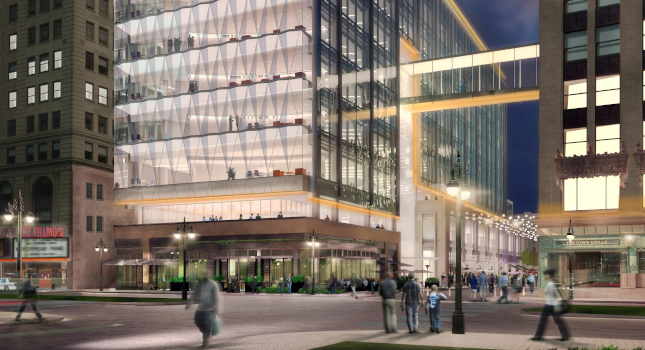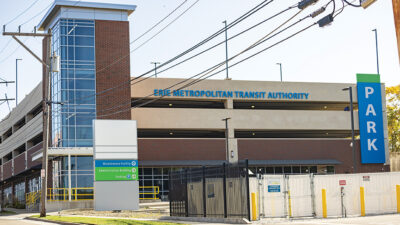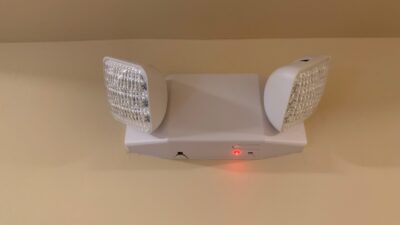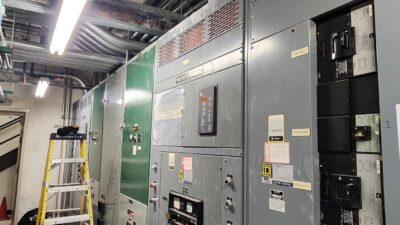Selecting window sprinklers for fire protection

Window sprinklers can make for a particularly appealing option to protect exterior windows when there is an exposure hazard. The SmithGroup design team for the Little Caesars’ Global Resource Center, a 236,000-square-foot high-rise building that is part of the global headquarters for multinational pizza chain Little Caesars Enterprises, used window sprinklers for protection of the exterior wall at a pedestrian bridge on the fifth story. This connector allows ready access for staff between existing offices in the adjacent, historic Fox Theater building and the iconic new office building.

However, the architectural design team wanted a seamless façade around the connector and local code required the exterior wall around the connector to be rated. The pedestrian bridge over West Columbia Street frames the view toward Comerica Park, the Detroit Tigers baseball stadium, while the adjacent façade glazing helps to frame the main entrance to the Little Caesars’ offices. These combine to make for a focal point that would be ill-served by discontinuities in the façade.
One may recall that window sprinkler listings generally prevent their use for protection against fire exposure from the exterior of the building unless they are part of an exterior deluge system; that is, in a wet-pipe system configuration, they are only listed to protect exterior walls from a fire within the building, not from a fire outside the building.

However, in this case, the authority having jurisdiction approved the window sprinklers as an equivalent method of protection because the primary fire hazard comes from combustibles within the office building and the exterior walls in question separate the building from a pedestrian walkway, rather than an adjacent building. The pedestrian walkway has limited combustible contents, is fully sprinklered and is under the same control and tenancy as the connected buildings. The risk of fire spread from the pedestrian walkway into the building was therefore considered to be much lower than the risk of fire spread from the building into the pedestrian walkway.
These characteristics combined to allow protection of the walls with window sprinklers, preserving the seamless appearance.




